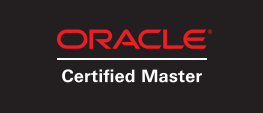As the last topic for OCM 12c Upgrade Exam, we need to know how to create services. You can only create Policy managed services in Policy managed databases. Thus, this topic is a good opportunity to practice the conversion between Admin <-> Policy Managed databases. Practice: Creating Policy managed services with both UNIFORM and SINGLETON …
Jul 31
OCM 12c Preparation - Start, stop, configure, and administer Oracle Grid Infrastructure
Like 11g, configure and administer Grid Infrastructure can be done using the 2 main provided tools: “crsctl” and “srvctl”. srvctl start/stop -> Start/Stop the cluster services. srvctl realocate -> Move some service, like the scan listener. srvctl status -> Check if service is running. srvctl config -> Display configuration. srvctl modify -> Change configuration. crsctl start/stop crs -> …
Jul 28
OCM 12c Preparation - Configure fast start failover
This topic is similar to the one related to the Observer in 11g OCM Exam. The Fast-Start Failover Observer is an Oracle Data Guard Broker component that allows the DBA automate failover tasks. Having it set up is a requirement to have more peaceful nights of sleep as well as a good OCM exam score. For this …
Jul 28
OCM 12c Preparation - Restore the standby database to its normal function
This topic is just telling you exactly to UNDO what you did in the previous topic: convert now from snapshot standby back to a physical standby. Just do the opposite way. However, as the topic title is not entirely clear, this could also means to restore the standby database to its normal function after a …
Jul 28
OCM 12c Preparation - Make the standby database available for testing
Make the standby database available for testing = Convert your Physical Standbys into Snapshot Standbys Standby databases can become snapshot standbys with a single command line over DG Broker or SQLPlus. What I recommend in this chapter is: Convert a physical standby to snapshot standby using Broker. (preferable) The same above using SQLPlus. That’s it! …







